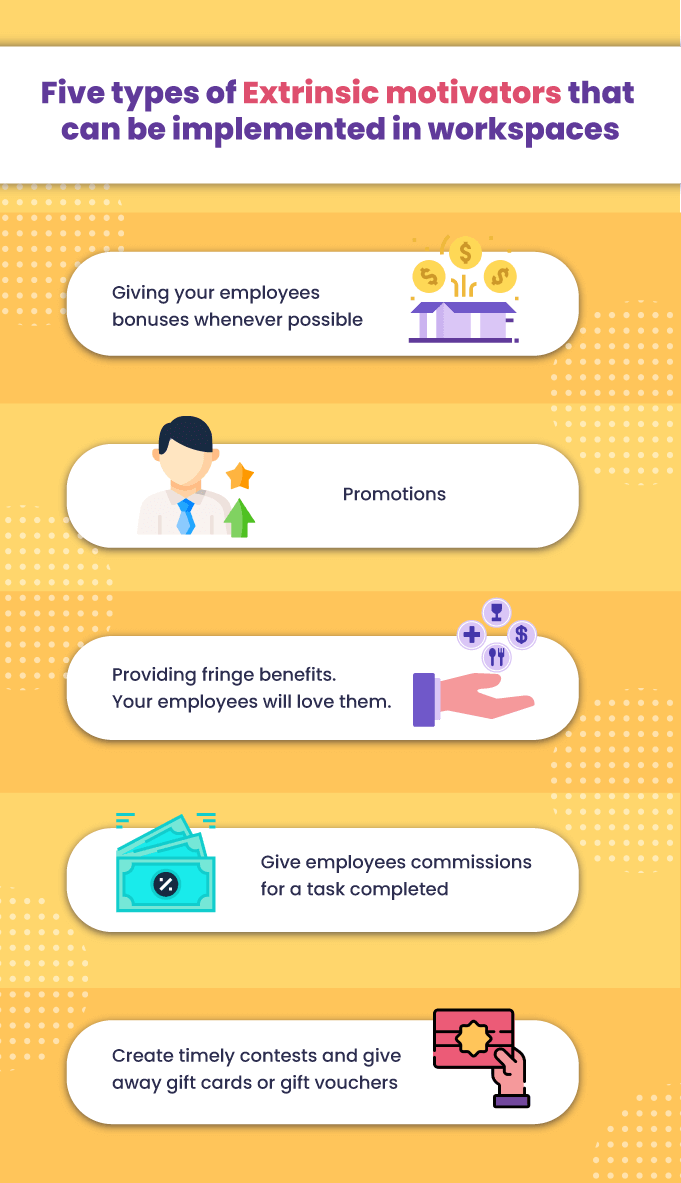


Intrinsic Motivation lasts for longer periods and often leads to higher level of success.Įxtrinsic Motivation might only occur for limited period of time, and the individual stops performing actions after the punishment or reward is applied.Įxample 1: A student attends guitar classes because he wanted to.

In a class or workplace, different individuals will/might require different approaches.Įxtrinsic incentives can be used to motivate a whole group, thus increasing productivity in workplace or creating a better learning environment in classrooms.įostering intrinsic motivation can be a lengthy process, requiring special treatment.Įxtrinsic Motivation often occur instantly as soon as the subject understands the perks of performing certain actions. The needs or causes that lead to extrinsic motivation (and not limited to) are: Competence: the need to do be the best and/or succeed.Relatedness: the need to maintain companionship or connection with others.Autonomy: the need to have complete control over one’s own life.The needs or causes that lead to intrinsic motivation are: You get rewarded as promised for the actions you perform due to extrinsic motivation.

There is neither pressure nor any sort of reward for the actions you perform due to intrinsic motivation. Whenever an individual performs an action or behavior because the individual is affected by the eternal factors such as rewards or punishments, such form of motivation is called Extrinsic Motivation. The act of being motivated by internal factors to perform certain actions and behavior is called Intrinsic Motivation. Differences between Intrinsic Motivation and Extrinsic Motivation Intrinsic Motivation Vs Extrinsic Motivation Intrinsic Motivation Motivation can be further divided into two different types.īoth kinds of motivation take part equally in a day-to-day life of an individual, and there are basic similarities and differences between the two.


 0 kommentar(er)
0 kommentar(er)
